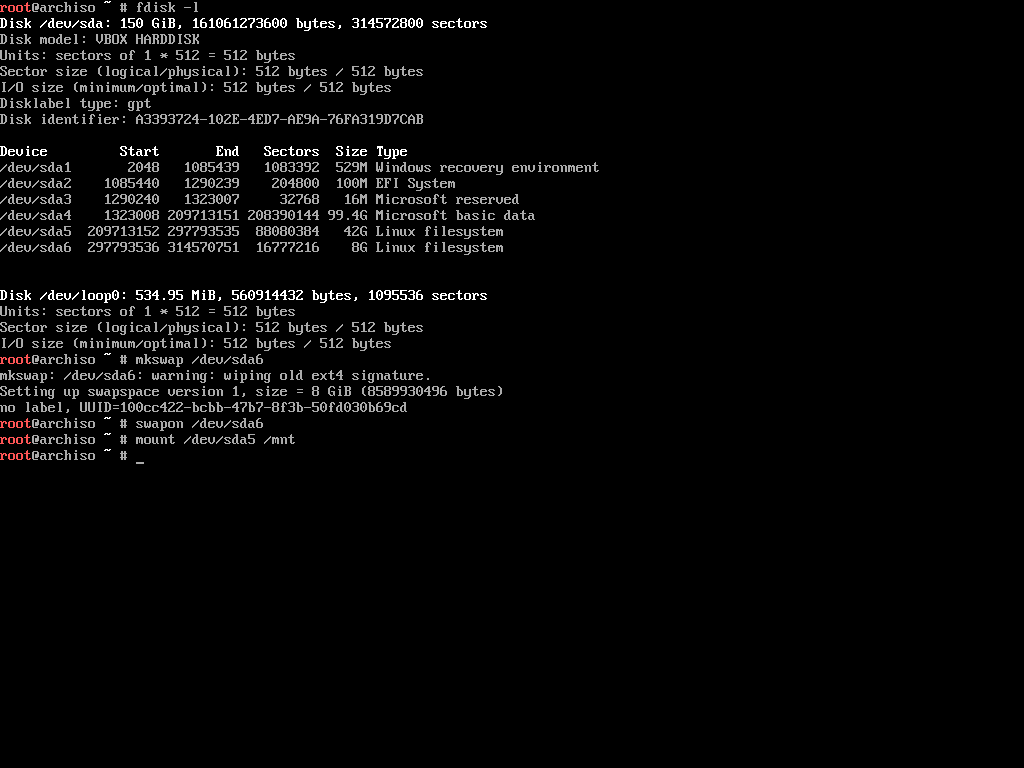
Let's add a standard user without root privileges. Most likely you won't be using this password ever.

Now lets set a password for the root, so no one can exploit that by simply typingĪnd type a good password. You also need to enable it, so you have internet after the installationġ2.
#ARCHLINUX CREATE BOOT PARTITION INSTALL#
You will also need a network manager and you install it by simply typing You should also configure the hosts file.Īnd add these lines at the end of the file changing the hostname with your actual hostsname aka the name you named your computer in previous stepġ27.0.1.1 *hostname*.localdomain *myhostname*ġ1. Please substitute the *your computer name here* with the actual name you want to call your computerĮcho *your computer name here* > /etc/hostname If after all installation the system still does not want to function properly with the partitions, then omit the -U, so no UUID will be used for partition identification, but rather just their file system i.e. You can also toss in there some other programs you know, you will need. That is why I like to install them at the beginning. Pacstrap /mnt base base-devel linux linux-firmware I would suggest to install everything with this: There is some wudu magic as how the servers are ordered in the /etc/mirrorlist it makes some sense. You can, before the installation, edit the mirror list for faster download, but it is up to you. Mount /dev/sda4 /mnt/home *If you have a home partition Mount /dev/sda1 /mnt/boot *for the efi and grub Mkdir /mnt/boot /mnt/home *leave the home out, if you don't have a home partition Mount /dev/sda3 /mnt *this will mount the root to /mnt as in the manual


These commands will format the efi partition in FAT32, make a swap partition and format your system to EXT4 file system. If you don't have a separate partition for your /home, don't do the last command. If less then 50G, then leave the /home out and use the whole space for the / Depending of the size of your disk, I would either suggest It has quite a good UI to make the partitions. Here are the steps, you have to take to install arch in efi configuration:Ģ.


 0 kommentar(er)
0 kommentar(er)
